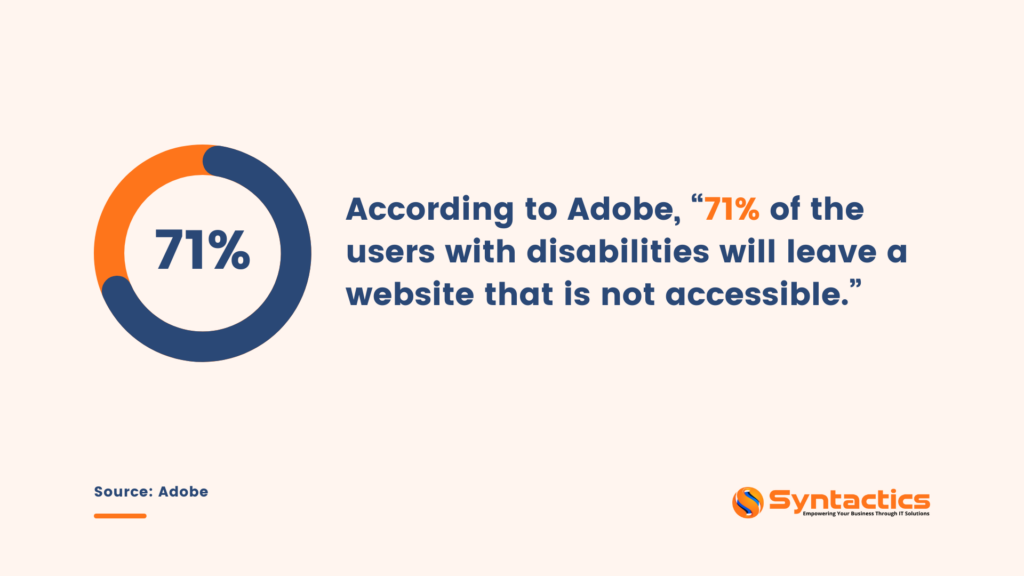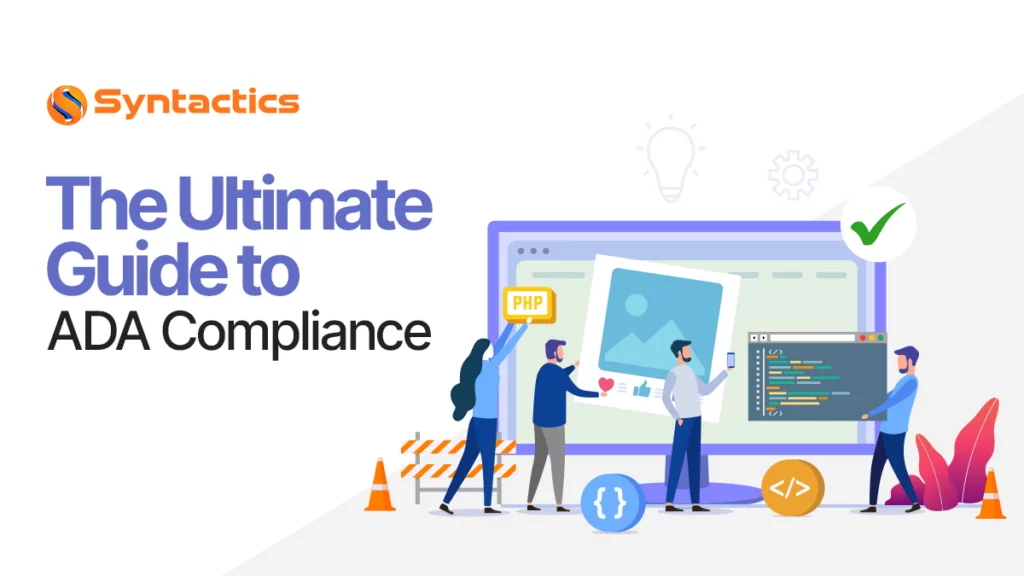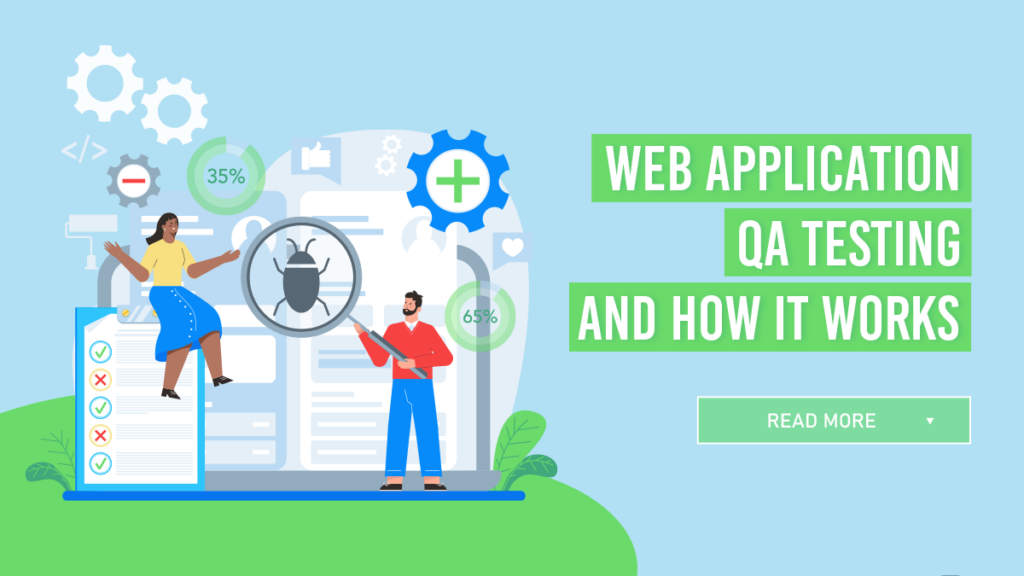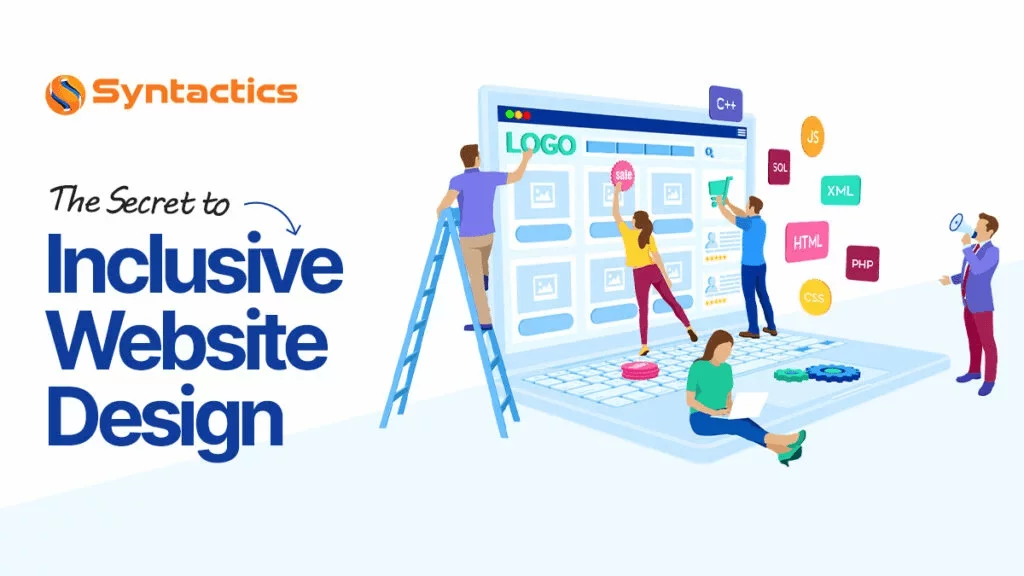
Best Practices for Designing Accessible Websites
Accessibility in web design is the approach to building websites that are usable to everyone, including persons with disability, on any device or connectivity. Key to this is enhancing a site’s content readability and structure, improving site engagement.
How Important Is Accessibility In Web Design?
Accessible website design ensures that the site, from its interface, digital content, and features, is understandable and easy to navigate, even for users with disabilities.

Source: World Health Organization.
Key Principles of Web Accessibility
The Web Content Accessibility Guidelines was established in order for web developers to build websites that are accessible to all.
WCAG guidelines revolve around several key principles for assessing whether the website is accessible or not. Here are the four key principles of accessibility in website design:
Perceivable
Users should be able to perceive or understand the website’s content and how it is presented. One way to ensure this is to add alternative text (alt text) to images. Screen readers can then read the text to provide users with more context about the visual content.
Being perceivable doesn’t focus on seeing alone. Thus, advanced strategies for ensuring accessibility include the use of screen reader software in converting text into speech or braille characters.
Operable
Website operability revolves around making the contents and interface easy to operate. This defines how users should be able to navigate through the website using keyboards. For instance, users can check out different pages, select an option from a menu, or even play attached media.
Understandable
Another important principle of accessible web design is ensuring the site is understandable. This refers to how well users can comprehend your website, including text and media content.
Many users, especially those with cognitive disabilities, prefer more appealing websites with easy-to-use interfaces.

Source: Think with Google.
The provided study underscores the importance of prioritizing user-focused designs to boost engagement and visitor returns.
Robust
Proper assessment of a site’s robustness examines whether it can be accessed through different devices and platforms.
Your site should be easily interpreted through other assistive technologies as well, which include screen readers and braille displays. You can use semantic HTML to ensure its compatibility.
Best Practices for Designing Accessible Websites
Accessibility in website design compliments other factors that affect the site’s presence and functionality. As a result, web accessibility impacts Search Engine Optimization strategies and improves competitiveness.
Here are some helpful practices for ensuring website accessibility:
Designing Accessible Content
It is crucial to consider usability when it comes to planning how the website’s content is displayed and perceived:
Text Content
Practices such as proper tagging and balancing contrasts are needed to ensure easy navigation and order within the site.
Multimedia Content
Adding captions is essential for multimedia content, such as pictures and videos. These become readable transcripts that deaf or blind users can understand with the help of a screen reader.
Forms and Input Fields
Ensure all form controls have clear labels for accessibility. These include input fields, checkboxes, and radio buttons.
Ensuring Accessible Navigation
An appealing appearance is only part of an accessible website. The website should also be easy to explore and navigate through (going to different pages, scrolling up and down, etc.)
By prioritizing and ensuring keyboard accessibility, you can optimize your website’s usability.
Some helpful practices include:
Ensuring all interactive elements are keyboard accessible.
Users should be able to explore all of the website’s interactive elements even if they’re not relying on a computer mouse. This includes links, form fields, and buttons.
Providing skip navigation links.
For users who rely more on keyboards or screen readers, a web design company can incorporate skip navigation links at the outset of each page. These links enable users to swiftly navigate past repetitive content.
Using consistent navigation menus across the website.
Having consistency in navigation menus helps in developing a model of how the website is structured. This makes it easier for users to navigate menus and information. It’s crucial for users with cognitive disabilities.
Testing and Evaluation
Ensuring an accessible website design is a necessity. Initial testing and assessment play a critical role in checking the finished site. Undergoing these tests guarantees the website’s usability. This testing also helps identify potential glitches, errors, and barriers that may lead to accessibility issues.

Source: Adobe.
Manual Testing
Manual testing involves hands-on evaluation performed by actual volunteers who represent the end users. Web testers gauge the accessibility of the website’s design, performance, and interface.
They will undergo specific tests, such as:
Testing with keyboard navigation.
Testing volunteers will try to navigate through the website by mouse and by keyboard only. This simulates the experience of users who rely on assistive technologies to understand the end-users’ perspectives.
Checking color contrast using tools.
Testers will also use other assistive tools in assessing the visual contents, such as color contrasts between text and background elements.
Assessing website performance.
Testers will be using test management tools to help them assess how the website and its interface perform.
Automated Testing
Compared to manual testing, automated testing involves developers using automatic tools in order to reveal general issues within the site. This testing is necessary in order to increase user engagement.
Using accessibility testing tools
Developers use Quality Assurance tools for checking websites. These tools will identify potential issues related to markup, coding, multimedia content, and more. Some examples of these tools include a BrowserStack, WAVE Web Accessibility Evaluation Tool, and PerfectPixel.
Identifying and fixing common accessibility issues
Automated testing tools pinpoint prevalent accessibility issues like absent alternative text for images, improper heading structure, or insufficient keyboard focus indicators.
Tools and Resources
When it comes to testing the website’s accessibility design, web developers should have the proper tools and resources to ensure website usability. These include the following:
Accessibility Validators
Accessibility validators automatically analyze each web page, single out accessibility issues, and provide suggestions for improvements.
Browser Extensions
Testers can use tools that can be added to web browsers rather than downloading entirely new software. These extensions have specific functionalities for different aspects of accessibility testing.
Assistive Technologies
Using assistive technologies is essential in understanding how all kinds of users experience the website. They’re designed to help users interact with the site’s digital content. These include screen readers and voice recognition software.
Implementing Accessibility in the Development Process
Ensuring accessibility in website design during the development process is necessary to create a site that is usable upon launch. Here’s how each of these practices can be implemented:
Integrating accessibility into the design phase.
Website developers must account for accessibility considerations throughout the development process. This includes consulting with team members regarding the design planning and identifying potential limitations.
Conducting regular accessibility audits.
Even after integrating the necessary features, developers should schedule regular audits and regression testing. This way, they can assess the product’s performance prior to and after launch. It requires both automatic and manual tests to eliminate overlooked issues.
Providing accessibility training for team members.
Businesses must ensure that their web designers, developers, testers, and other team members grasp their responsibilities in upholding accessibility. They can provide organized training sessions regarding the processes and necessary tools.
Conclusion
The need for accessible website design cannot be overstated. If your business platform embodies handiness, more users will be intrigued by your site and want to interact with it more, increasing its online presence.
Adopting necessary practices is necessary to ensure the website is easy to interact with. Partnering with a skilled web development company in the Philippines can positively contribute to website accessibility efforts.
Frequently Asked Questions About Web Design
What is the importance of website design?
Web design is crucial for the following reasons:
- Enhancing user experiences;
- Creating impactful first impressions for visitors;
- Increasing conversion rates;
- Improving SEO;
- Strengthening brand identity, etc.
What defines a good website design?
The following elements define a good web design:
- Usability and navigability
- Responsive design
- Visual hierarchy
- Accessibility
- Quick loading times
- Consistent branding
What is the main purpose of a web designer?
They create visually appealing, user-friendly, and functional sites that effectively communicate a brand’s message while providing optimal experiences.


















Comment 0